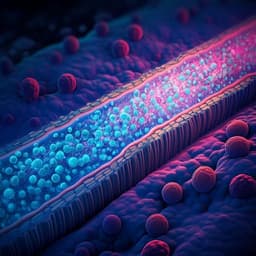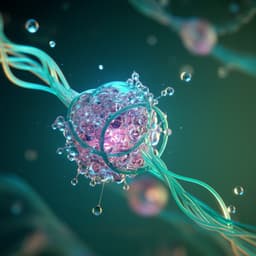Introduction
Membrane distillation (MD) is a promising desalination technology utilizing the simultaneous transfer of heat and mass through a hydrophobic membrane. However, concentration polarization (CP) and temperature polarization (TP) near the membrane surface significantly deteriorate MD performance. CP lowers the effective vapor pressure difference, reducing the driving force for MD. Furthermore, CP can lead to membrane fouling and scaling, especially with high-rejection membranes like those used in MD. Calcium sulfate (CaSO4) is a primary scalant due to its high concentration in water and low solubility. CaSO4 scaling causes pore blockage, reduced flux, membrane wetting, and ultimately, complete performance loss. Previous attempts to control scaling have involved chemical additives, increasing costs and environmental concerns, and proving largely ineffective in the long term. Feed spacers are typically used to mitigate polarization effects, and this study explores the use of a 3D-printed CNT spacer to enhance MD performance and control CaSO4 scaling. CNTs are attractive due to their excellent properties, including heat and electrical conductivity, and their ability to enhance membrane hydrophobicity and surface roughness. While previous studies showed the benefits of CNTs in improving MD performance, this study focuses on the specific mechanism of scaling mitigation using CNT-embedded spacers in MD.
Literature Review
Several studies have investigated the impact of concentration and temperature polarization on membrane distillation performance. The mutual influence of CP and TP has been modeled and analyzed, highlighting the reduction in driving force caused by increased concentration near the membrane. Membrane fouling, including scaling, has been extensively studied, particularly focusing on CaSO4 as a major scalant due to its low solubility and tendency to form crystals on membrane surfaces. The effects of these crystals on membrane pore blockage, flux decline, and membrane wetting have been documented. Various methods for scaling control, including chemical injection and surface modification of membranes, have been explored, but limitations in long-term effectiveness and cost-effectiveness have been noted. Existing research on the use of feed spacers to reduce polarization effects is also reviewed, highlighting the potential benefits of increased spacer roughness for turbulence promotion and improved heat transfer. Prior research involving CNTs in membranes demonstrated their positive impact on membrane hydrophobicity and heat transfer. This study builds upon these findings by exploring the specific anti-scaling mechanisms of CNT-embedded spacers in MD.
Methodology
This study used a direct-contact membrane distillation (DCMD) unit with an integrated optical coherence tomography (OCT) device for real-time monitoring of scaling. A commercial hydrophobic PVDF membrane was employed, and 3D-printed spacers (CNT and PLA control) were fabricated using methods described in a previous study. A 0.01 M CaSO4 solution was used as the feed, and experiments were conducted at varying feed temperatures (60, 70, and 80 °C) while maintaining a constant permeate temperature of 19.5 °C. Flow rates were kept at 0.5 LPM on both feed and permeate sides. Long-term flux measurements were performed to monitor the impact of scaling on MD performance, with flux calculated using the volume of permeated water, membrane area, and time. Membrane scaling was characterized using SEM and OCT, measuring scaling thickness and assessing changes in water contact angle (WCA) to evaluate hydrophobicity over time. The number of bubbles generated during the MD process was also visually counted. Additional experiments were performed using an aeration pump to introduce artificial bubbles in order to assess their impact on scaling. Finally, a mechanistic model of MD-crystallization was developed to further elucidate the scaling mechanism, using a population balance equation to describe the crystallization process and parameter estimation using experimental water flux data. The model incorporated parameters for nucleation and growth rates, and its results were compared to the experimental data to validate the proposed mechanisms.
Key Findings
The CNT spacer demonstrated significantly improved scaling mitigation compared to the PLA spacer and the no-spacer control. At 60°C, the membrane without a spacer showed complete flux loss after a VCF of 2.4, while the PLA spacer maintained flux until VCF 3.1. In contrast, the CNT spacer showed only a 37% flux reduction (29 LMH) even at VCF 4. OCT images revealed minimal scaling on the membrane surface with the CNT spacer, even at high VCFs. SEM images confirmed the presence of substantially fewer crystals on the membrane with the CNT spacer compared to others. WCA measurements demonstrated that the CNT spacer helped maintain membrane hydrophobicity for a longer duration. The observation of bubble formation, particularly with the CNT spacer, suggests a potential role for bubbly flow in reducing surface scaling. Additional experiments with an aeration pump introducing artificial bubbles into the system with a PLA spacer confirmed that bubble generation could mitigate scaling and improve flux. The mechanistic model of MD-crystallization developed in this study showed good agreement with experimental data, supporting the hypothesis that the rough surface of the CNT spacer facilitates the detachment of initial nuclei, leading to crystal growth in the bulk solution and reduced membrane scaling. The model also indicated smaller membrane nucleation rate constants and higher spacer nucleation rate constants for the CNT spacer compared to the PLA spacer.
Discussion
The results clearly demonstrate the effectiveness of the 3D-printed CNT spacer in mitigating CaSO4 scaling during MD. The unique scaling behavior observed with the CNT spacer is attributed to several factors. The enhanced flux and vaporization rate, likely due to the spacer's increased surface area and roughness, lead to more bubble formation. The bubbly flow generated helps to reduce concentration polarization near the membrane surface. The rough surface of the CNT spacer facilitates the detachment of the initial nuclei from the membrane surface, promoting crystal growth in the bulk solution rather than on the membrane. This is supported by the observation of larger crystals in the bulk solution when using the CNT spacer. The mechanistic model developed in this study provides further support for this hypothesis, demonstrating good agreement with experimental observations. The findings contribute significantly to the understanding and control of membrane scaling in MD. This research offers a novel approach for improving the long-term performance and sustainability of MD systems.
Conclusion
This study successfully demonstrated the effectiveness of 3D-printed CNT spacers in mitigating CaSO4 scaling during MD. The combination of enhanced flux, bubble formation, and the rough surface of the CNT spacer leads to a unique scaling mechanism, reducing membrane fouling and maintaining high flux even at high VCFs. The mechanistic model provides a theoretical framework to understand these observed effects. This research provides valuable insights for improving MD performance and offers a promising alternative to chemical-based scaling control methods. Future work should focus on further optimization of spacer design, exploring other nanomaterials, and expanding the model to incorporate multiphase flow and further refining parameter estimations using more detailed crystallization measurements.
Limitations
The mechanistic model developed in this study simplifies the complex interplay of factors affecting crystallization in the MD system. While it provides valuable insights, further improvements and validations are needed, especially concerning the precise quantification of nucleation and growth rates at different locations. The experiments were conducted under specific conditions, and the generalizability of the findings to other operating conditions and scalants requires further investigation. Detailed measurements of local salt concentrations and crystal populations within the MD module were not obtained. This lack of detailed data limits the complete validation of the model and the precise quantification of all the proposed scaling mechanisms.
Related Publications
Explore these studies to deepen your understanding of the subject.







